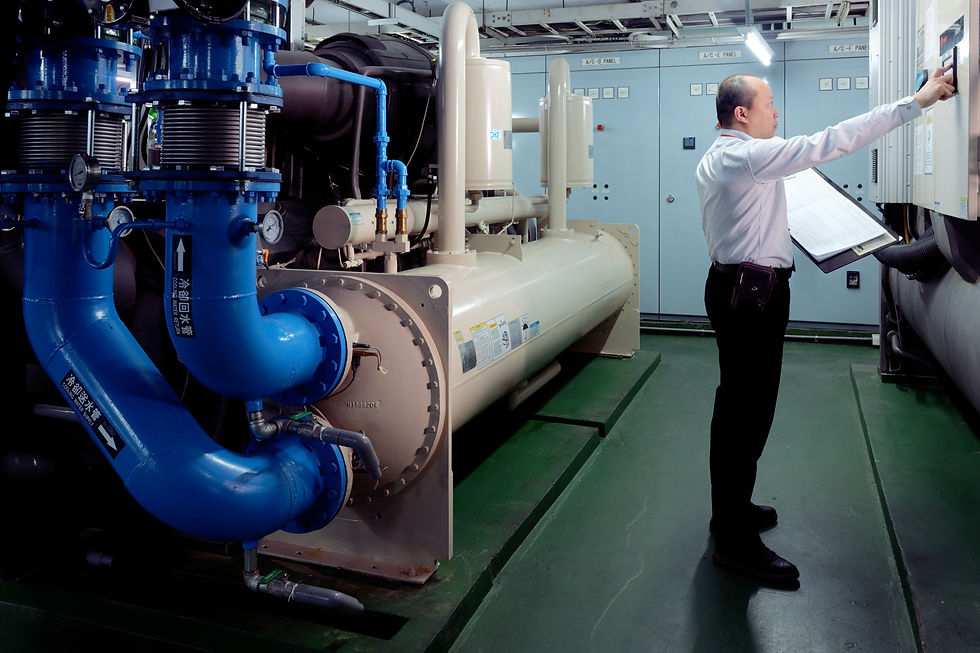The Cost of Keeping Cool in a Climate Crisis
- Tim Shen
- Jan 16, 2024
- 3 min read
Have you had that feeling that Taipei often feels hotter than it used to? If you have, you don’t need to worry that your senses are fooling you; according to Taiwan’s Commonwealth Magazine (1), Taipei’s temperatures have risen faster than any city in Asia apart from Beijing in the last 100 years, seeing a 1.8°C increase. Instead, you might want to worry that most of that rise has occurred in the last 30 years, with temperatures soaring more than 1.4°C on average since 1990.
This temperature increase is driven by the global heating caused by greenhouse gas emissions but it has been exacerbated locally by Taipei being situated in a topographic basin and the city’s rapid urban development over the last few decades. The construction of buildings and roads, often replacing areas of greenery that help to lower temperatures, have created an environment that absorbs solar radiation and prevents the flow of air that would otherwise have a cooling impact.
This is known as the Urban Heat Island Effect, and it means that during the hot summer months, buildings must work harder to provide a comfortable indoor environment for occupants. Ironically, this requires ever greater energy consumption for air conditioning at a time when Taiwan is facing chronic electricity supply issues, and the process pumps more heat outside into the city environment. The heating, ventilation and air conditioning (“HVAC”) systems of commercial office buildings can make up 40-50% of total building energy consumption (2), and more than 70% of base building consumption (i.e. not including what tenants use). Therefore, any efficiencies that can be found in these systems have the potential to make a significant impact.
With the world getting hotter each year and this year being on course to be the hottest on record (3), this is an issue that we take very seriously at Hung Kuo Building. In addition to expanding the vegetative cover over the property, and the installation of the hybrid green and solar-reflective roof that we discuss in the Green Building section of this website, we have worked hard to make our ventilation and air-conditioning systems as efficient as possible to reduce the amount of energy we consume and the associated Greenhouse Gas Emissions produced.
In 2015, we upgraded the entire building’s fan coil units from those originally installed when the Hung Kuo Building was constructed more than 30 years ago. Fan coil units are installed towards the end of the ventilation system. They cool the air to the correct temperature and then distribute it into occupied spaces based on the layout of ceiling ducts.
In total, we upgraded 555 fan coil units, which we estimate led to an 10.5% increase in efficiency compared to the old ones.

In 2019 we replaced the buildings original chillers with three new, efficient models. Only one of the chillers is used during a typical summer day. The others are used to create ice through the night, which is stored in tanks under the building and gradually melted during the day to create chilled water for the air condition system. This greatly reduces the building’s air conditioning electricity consumption during peak daytime hours, minimizing the utility costs our tenants pay, and the peak load burden placed on Taiwan’s electricity provider. Our new chillers have led to an 30% increase in efficiency compared to the old ones.

This year, we have upgraded all the chilled water pipes in the building to increase the efficiency of the iced water system. But it’s not just about hardware and equipment upgrades; we’re constantly looking to optimise operating procedures and have found further efficiencies - for example, by reducing the hours required to create ice overnight.
Significant Results
The warmest months in Taipei are generally between May and October. Between 2018 and 2022 Hung Kuo Building averaged a 31.1% electricity increase during these hotter months over the six cooler months of November to April. This essentially represents the additional energy requirements of the building’s air conditioning load. Our efforts to increase ventilation and air conditioning efficiency since 2019 have been bearing fruit, with summer month electricity consumption reductions against the 2018 baseline of between 21% and 34.8% (last year). The difference in greenhouse gas emissions between 2019 and 2022 and the 2018 baseline (2,551 metric tons) is greater than the greenhouse gas emissions for the entire building energy consumption of May-October 2018 (2,342.7 metric tons).

Despite this year being so far at least as hot as the last five, during May, June, and July 2023, our electricity consumption has averaged 30.1% less than the average of the same three months over the previous five years. This represents a promising trend and confirmation that our energy efficiency improvements are working, and we will continue trying to minimize every kilowatt hour of electricity the system consumes and associated kilogram of greenhouse gases that subsequently produces.



Komentarze